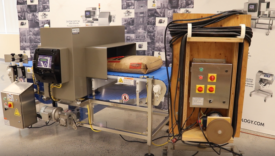Home » Blogs
Blogs

Dairy Foods Blog
Noise is a common occupational hazard in dairy processing factories
Read More
Automation innovation drives higher throughput
Dairy processors can begin by identifying a productivity pain point.
May 20, 2022
Enough of the plant-based hype
Highly processed alternatives to dairy and other products are not worthy of a health halo.
May 11, 2022
How to seize opportunities in plant-based dairy alternatives
The perceived “health halo” of these products, or simply consumers’ desire to try something new, is propelling demand.
April 28, 2022
Avoid compliance dust-ups over combustible dust
Follow the latest OSHA requirements to ensure your workers are safe from explosion risks.
April 19, 2022
Get our new eMagazine delivered to your inbox every month.
Stay in the know on the latest dairy industry trends.
SUBSCRIBE TODAYCopyright ©2024. All Rights Reserved BNP Media.
Design, CMS, Hosting & Web Development :: ePublishing






